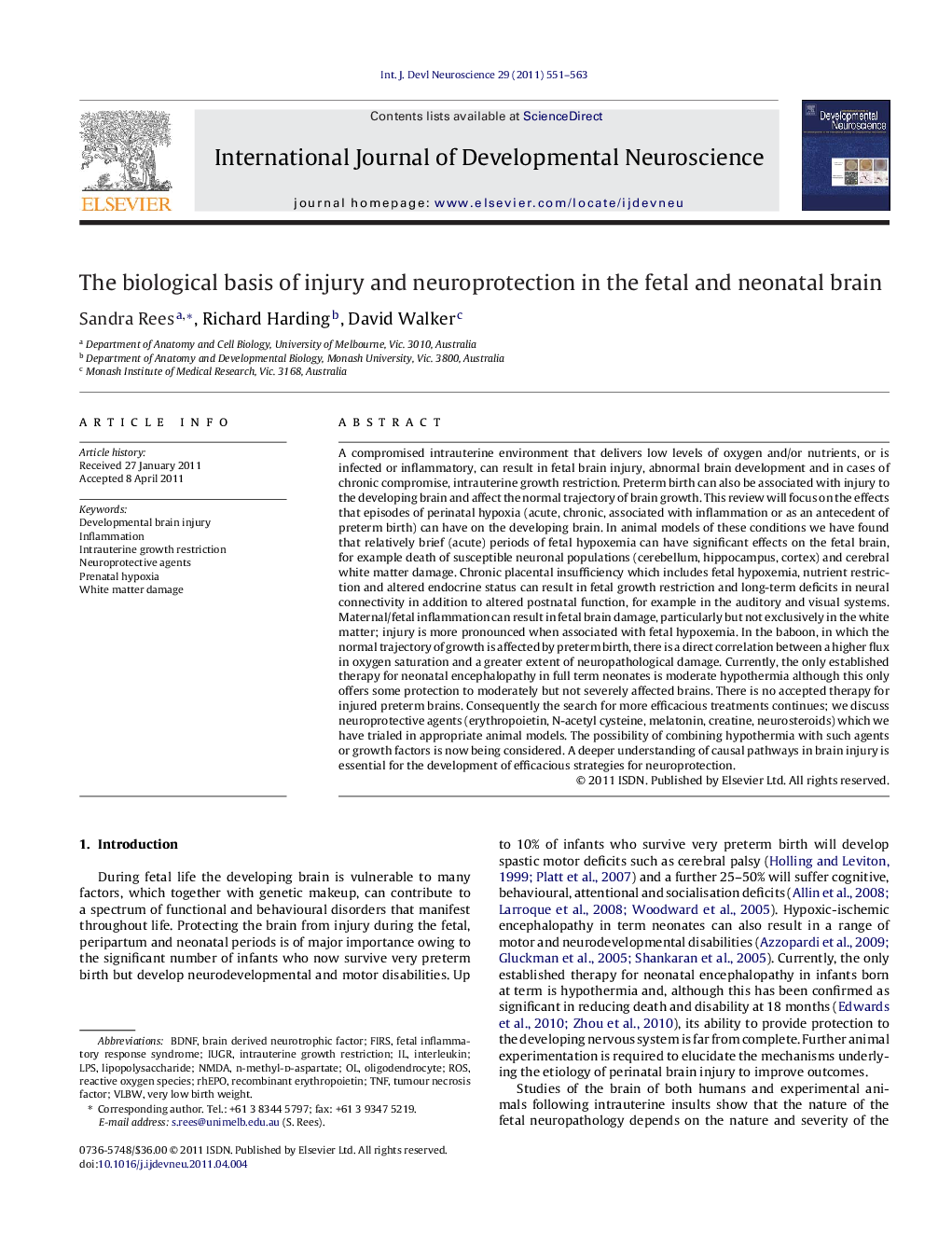| Article ID | Journal | Published Year | Pages | File Type |
|---|---|---|---|---|
| 2786480 | International Journal of Developmental Neuroscience | 2011 | 13 Pages |
A compromised intrauterine environment that delivers low levels of oxygen and/or nutrients, or is infected or inflammatory, can result in fetal brain injury, abnormal brain development and in cases of chronic compromise, intrauterine growth restriction. Preterm birth can also be associated with injury to the developing brain and affect the normal trajectory of brain growth. This review will focus on the effects that episodes of perinatal hypoxia (acute, chronic, associated with inflammation or as an antecedent of preterm birth) can have on the developing brain. In animal models of these conditions we have found that relatively brief (acute) periods of fetal hypoxemia can have significant effects on the fetal brain, for example death of susceptible neuronal populations (cerebellum, hippocampus, cortex) and cerebral white matter damage. Chronic placental insufficiency which includes fetal hypoxemia, nutrient restriction and altered endocrine status can result in fetal growth restriction and long-term deficits in neural connectivity in addition to altered postnatal function, for example in the auditory and visual systems. Maternal/fetal inflammation can result in fetal brain damage, particularly but not exclusively in the white matter; injury is more pronounced when associated with fetal hypoxemia. In the baboon, in which the normal trajectory of growth is affected by preterm birth, there is a direct correlation between a higher flux in oxygen saturation and a greater extent of neuropathological damage. Currently, the only established therapy for neonatal encephalopathy in full term neonates is moderate hypothermia although this only offers some protection to moderately but not severely affected brains. There is no accepted therapy for injured preterm brains. Consequently the search for more efficacious treatments continues; we discuss neuroprotective agents (erythropoietin, N-acetyl cysteine, melatonin, creatine, neurosteroids) which we have trialed in appropriate animal models. The possibility of combining hypothermia with such agents or growth factors is now being considered. A deeper understanding of causal pathways in brain injury is essential for the development of efficacious strategies for neuroprotection.
► Acute fetal hypoxemia can have significant effects on fetal brain development. ► Chronic placental insufficiency leads to long-term neurological deficits. ► Brain damage resulting from intrauterine inflammation is compounded by hypoxemia. ► We review a range of agents which provide neuroprotection in animal models. ► We discuss clinical trials of therapeutic approaches to neuroprotection.
